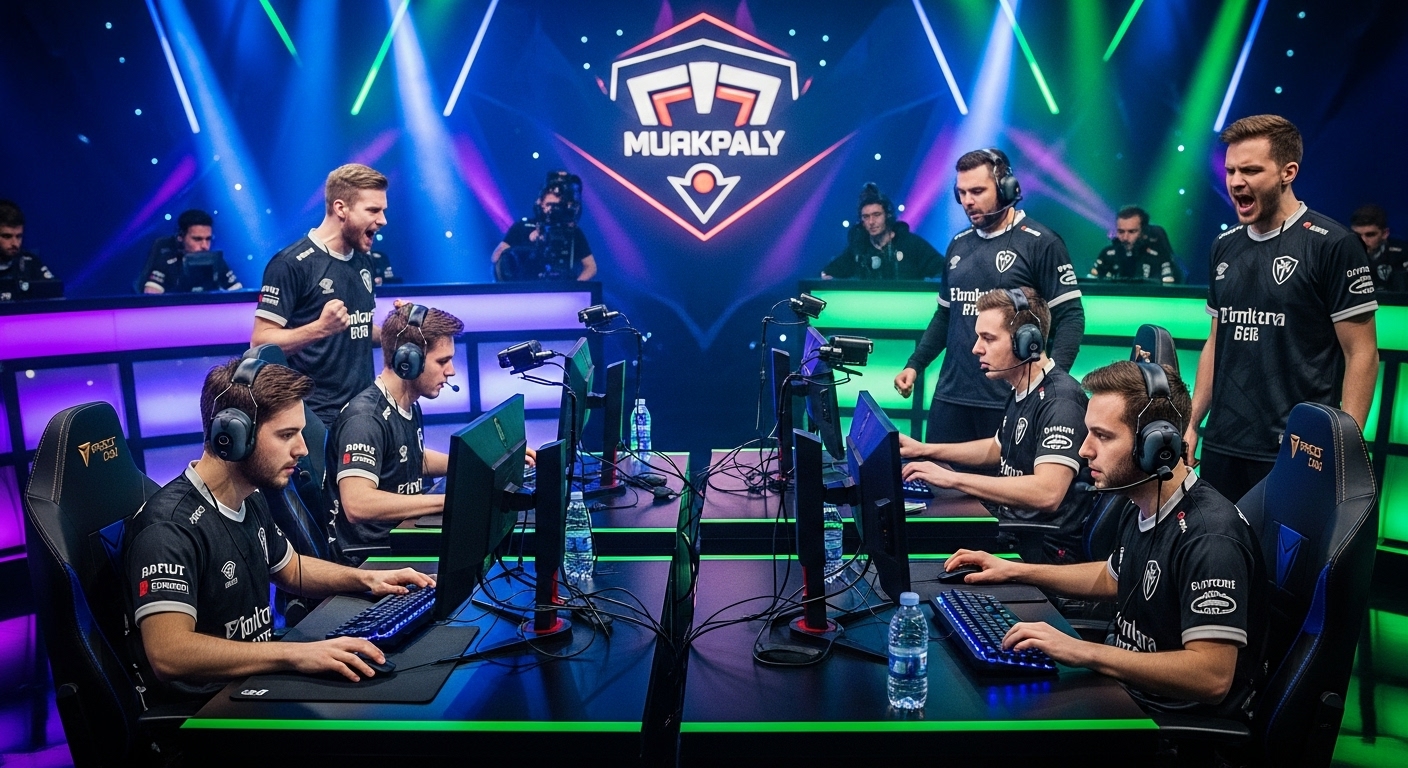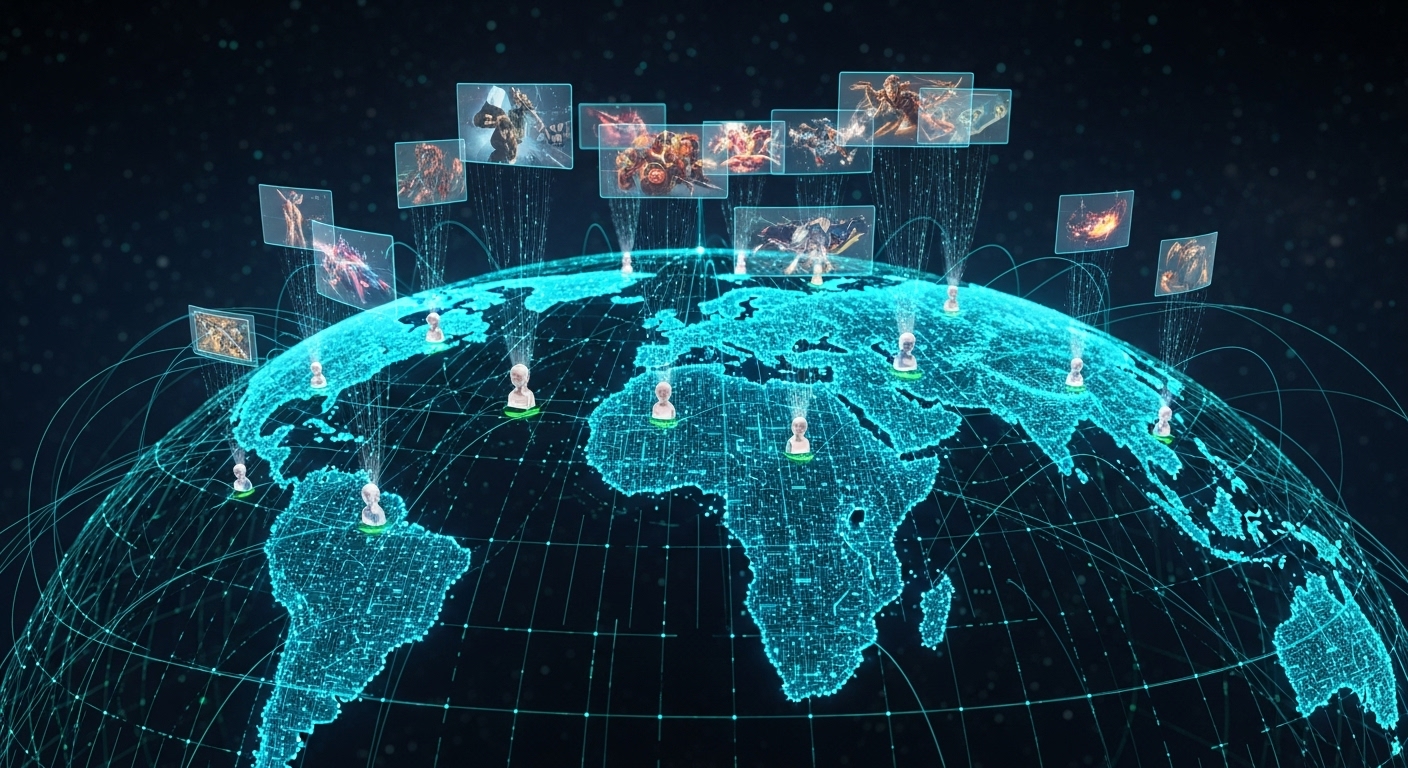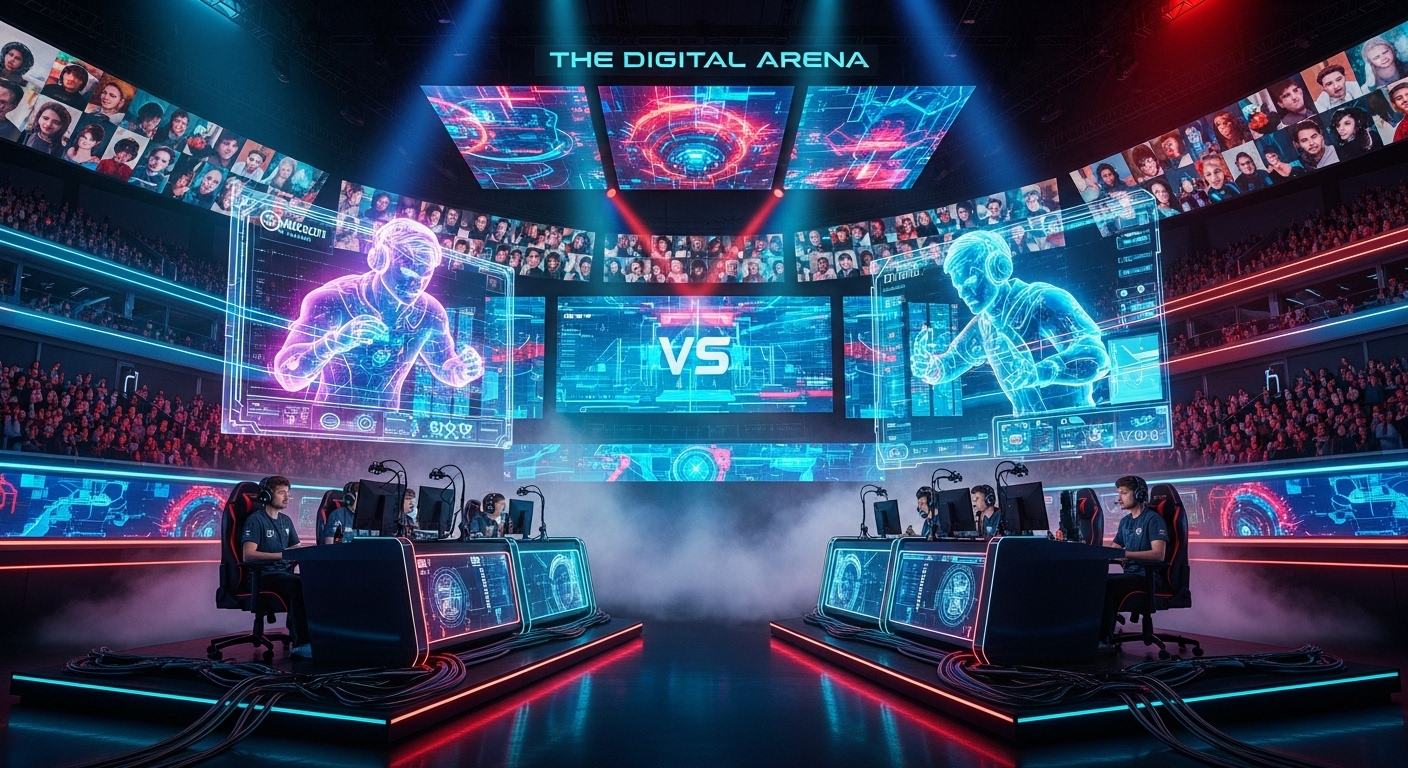Introduction: The Birth of a Digital Revolution
In the last two decades, the world has witnessed an extraordinary transformation in the realm of entertainment and competition. What once began as small gatherings of passionate gamers battling each other on bulky computer screens has evolved into one of the most dominant forms of modern sport — Esports. Today, Esports has become a billion-dollar industry that attracts millions of viewers across the globe, blurring the line between gaming and mainstream sports. It stands as a symbol of how technology, culture, and human ambition can converge to create something truly revolutionary.
The story of Esports is not just about video games. It’s about community, innovation, and the redefinition of what competition can mean in the digital age. From college dorm rooms to massive arenas packed with roaring fans, Esports has built a universe of its own, driven by skill, strategy, and spectacle. To understand its journey is to understand one of the most fascinating evolutions of entertainment in the twenty-first century.
The Humble Beginnings of Competitive Gaming
Long before Esports became a household term, gaming competitions existed in their most primitive forms. In the early 1970s and 1980s, video games were just emerging as a new form of entertainment. The first known gaming competition took place at Stanford University in 1972, where students competed in a game called Spacewar. The prize? A year’s subscription to Rolling Stone magazine. It was humble, yet it marked the beginning of something bigger than anyone could have imagined.
As arcade culture grew during the 1980s, competitive gaming became a casual yet exciting part of gaming communities. High-score battles in games like Pac-Man, Donkey Kong, and Space Invaders drew small but enthusiastic crowds. Gamers began to gain local fame, with their initials etched on leaderboard screens across arcades. This period laid the foundation for what would later become organized Esports — though at the time, the idea of professional gaming seemed almost absurd.
The 1990s introduced the internet and home gaming consoles, which completely transformed the landscape. Multiplayer gaming over local networks became possible, and titles like Doom and Quake ushered in the era of online competition. Gaming was no longer limited to one’s neighborhood; it was now a global phenomenon waiting to explode.
The 2000s: The Dawn of Professional Esports
By the early 2000s, gaming had grown into a serious hobby for millions, and competitive gaming began to find its identity. South Korea was the first nation to truly embrace Esports as a legitimate sport. With fast internet speeds and a growing culture of gaming cafés, the country became the epicenter of competitive gaming. Titles like StarCraft turned ordinary players into celebrities, drawing television coverage and major sponsorships. Korean Esports organizations began forming structured leagues, creating a model that other countries would soon follow.
At the same time, Western countries started developing their own competitive gaming scenes. The Cyberathlete Professional League (CPL) and Major League Gaming (MLG) began hosting large-scale tournaments in the United States, bringing players together for games like Counter-Strike, Halo, and Warcraft III. For the first time, players could make a living through gaming. Although it was still in its infancy, the Esports ecosystem had begun to take shape — complete with professional teams, sponsorship deals, and international competitions.
During this period, gaming technology also evolved rapidly. Broadband internet became more accessible, and online multiplayer platforms like Xbox Live and Steam provided gamers with spaces to connect, compete, and improve. Gaming communities became more organized and collaborative. Fans could now watch and follow their favorite players through early streaming platforms or recorded matches uploaded online. The competitive gaming scene was slowly building momentum, and the idea of Esports as a career was becoming increasingly realistic.
The 2010s: Esports Goes Mainstream
The 2010s marked the golden era of Esports — the decade when it truly broke into the mainstream. One of the most significant drivers of this change was the rise of live-streaming platforms. Services like Twitch and YouTube Gaming allowed fans from around the world to watch tournaments, scrimmages, and individual players live. Suddenly, professional gamers were not just competitors but entertainers, drawing millions of viewers to their channels. The accessibility of streaming turned Esports into a spectator sport on a scale that traditional sports had never experienced online.
Games such as League of Legends, Dota 2, Counter-Strike: Global Offensive, and Overwatch became cornerstones of the competitive scene. Each of these games built thriving professional leagues and international tournaments with multi-million-dollar prize pools. The League of Legends World Championship became an annual global event, filling stadiums and attracting viewership numbers rivaling the Super Bowl. Meanwhile, The International, Dota 2’s premier event, shattered records year after year for the largest prize pool in Esports history, funded almost entirely by the game’s community.
This was also the decade when Esports began to gain recognition from major media outlets and traditional sports organizations. Television networks started broadcasting tournaments, while well-known athletes and celebrities invested in Esports teams. Major brands — from tech companies to fast-food chains — saw the marketing potential of Esports and began sponsoring players and events. Universities began offering Esports scholarships, and Esports training programs emerged across the world.
The professional structure of Esports also matured. Teams had coaches, analysts, managers, and even physical trainers. Players lived in team houses, practicing together daily to refine strategies and build synergy. The level of discipline mirrored that of traditional sports teams. Esports was no longer just about playing games; it was about mastering them through dedication, teamwork, and mental toughness.
The Players: New-Age Athletes in the Digital Arena
Esports players are often misunderstood by those unfamiliar with the competitive scene. To outsiders, it may seem that they simply play video games all day. In reality, professional gamers train for hours upon hours, honing their reflexes, strategies, and coordination. Many players practice for ten to twelve hours a day, studying their opponents and analyzing every small mistake.
What separates top Esports athletes from casual players is not just mechanical skill but also mental endurance. Competitive gaming demands incredible focus, precision, and adaptability. Reaction times must be lightning fast, decision-making must be instant, and communication with teammates must be seamless. The pressure is immense — one small misstep can cost an entire match, or even a championship.
Unlike traditional sports, where physical attributes like strength or height often provide an advantage, Esports levels the playing field. Success depends on intelligence, teamwork, and practice. This inclusivity has allowed people from all walks of life to rise to the top purely on merit. Many young players have become millionaires in their teens, achieving fame that rivals professional athletes in traditional sports.
Esports has also given rise to some of the most loyal and passionate fanbases in the world. Players like Faker in League of Legends or s1mple in Counter-Strike are treated like legends. Their matches are watched by millions, their plays dissected frame by frame by fans and analysts alike. The world of Esports celebrates not just victory but artistry — the perfect headshot, the unexpected comeback, the flawless team coordination that turns a game into a spectacle.
The Spectacle: Tournaments, Production, and Global Events
Modern Esports tournaments are no less grand than traditional sporting events. Massive arenas light up with thousands of cheering fans, while millions more watch live streams from their homes. The production value of these events rivals that of major entertainment shows. With dramatic lighting, commentary desks, instant replays, and pre-match analysis, the presentation of Esports has reached cinematic levels.
One of the defining features of Esports tournaments is their sense of global unity. Players and teams come from every corner of the world, representing different languages, cultures, and playstyles. International tournaments bring together this diversity in ways few other events can. The roar of the crowd when a home team wins on stage is electrifying, and the emotion of seeing an underdog triumph resonates deeply with audiences everywhere.
The scale of these events continues to grow each year. Major tournaments fill arenas like the Staples Center in Los Angeles, the Bird’s Nest Stadium in Beijing, and Madison Square Garden in New York. Esports has even been featured as a demonstration sport at international multi-sport events, signaling a future where digital competitions stand side by side with physical ones. The spectacle of Esports has become a cultural phenomenon — a celebration of passion, technology, and competition in its purest digital form.
The Business of Esports: A Billion-Dollar Industry
Behind the screens and excitement lies an economic powerhouse. Esports has become one of the fastest-growing industries in entertainment. Revenue streams include sponsorships, advertising, ticket sales, merchandise, media rights, and game publisher investments. Companies across sectors have realized the immense potential of connecting with the young, tech-savvy audience that Esports attracts.
The growth of Esports organizations mirrors that of traditional sports franchises. Teams are now global brands, complete with merchandise lines, content creation divisions, and dedicated fan communities. Esports has also created numerous career opportunities beyond playing, including coaching, commentary, event production, marketing, and data analysis.
Investors and venture capitalists have poured millions into Esports infrastructure, building arenas, training facilities, and academies. Game developers themselves play a crucial role by continuously updating titles, balancing gameplay, and supporting competitive ecosystems. This collaboration between corporations, communities, and creators fuels the industry’s continued expansion.
Moreover, Esports has proven to be resilient. During times when physical sports faced disruptions, Esports thrived online. Virtual tournaments continued, and viewership soared. This adaptability highlights one of Esports’ greatest strengths — its digital foundation allows it to exist and evolve without physical constraints.
The Role of Technology: Fueling the Digital Frontier
Technology is the beating heart of Esports. From high-speed internet to powerful gaming hardware, every advancement pushes the boundaries of what’s possible. Modern games are designed with competitive balance in mind, allowing for fairness and precision at the highest levels of play.
The rise of virtual reality, artificial intelligence, and augmented reality opens new possibilities for the future of Esports. Imagine tournaments where players physically move within virtual environments, or AI-driven analysis that helps teams develop flawless strategies. Streaming technology continues to evolve as well, providing ultra-low latency, higher resolutions, and interactive viewer experiences.
Social media also plays a pivotal role in connecting fans with players. Platforms like X, Instagram, and TikTok allow gamers to share highlights, engage with fans, and build personal brands. The digital ecosystem surrounding Esports extends far beyond the games themselves, encompassing everything from memes to music to fashion. It’s a culture powered by technology but driven by people.
The Cultural Impact of Esports
Esports has become more than just competition — it’s a cultural movement. It represents the intersection of technology, creativity, and community. For younger generations, gaming is not merely entertainment; it’s a shared language and identity. Esports events often feel like celebrations of modern culture, blending gaming, art, and performance into a single experience.
The inclusivity of Esports has also helped redefine the idea of athleticism and success. It provides a platform where talent and dedication matter more than physical attributes. It has given rise to diverse communities, where people from different backgrounds come together over a shared passion. This global connectedness is one of Esports’ most powerful legacies.
Moreover, Esports has inspired education and innovation. Schools and universities around the world have incorporated Esports programs, teaching teamwork, strategy, and communication through gaming. The competitive nature of Esports encourages problem-solving and adaptability — skills that are increasingly valuable in the modern world.
Challenges and Controversies
Despite its success, Esports faces its share of challenges. Issues like player burnout, unfair contracts, and lack of regulation have sparked debates about the industry’s sustainability. The pressure to perform at a high level can lead to mental health struggles among players, who often begin their careers in their teenage years and retire before thirty.
Cheating, match-fixing, and online toxicity also pose ongoing challenges. As Esports grows, maintaining integrity and fairness becomes increasingly vital. Many organizations have begun implementing stricter rules, anti-doping policies, and ethical guidelines to protect players and the industry’s reputation.
Another challenge lies in balancing the commercial and competitive aspects of Esports. While large corporations bring investment and structure, there’s always a risk of overshadowing the grassroots passion that built the community in the first place. Preserving authenticity while expanding commercially will define the next era of Esports.
The Future of Esports: Beyond the Screen
As we move further into the digital age, Esports stands at the forefront of entertainment innovation. The next decade promises even greater integration between gaming, technology, and mainstream culture. With virtual reality and metaverse platforms on the horizon, Esports could soon transcend traditional boundaries, offering experiences that blend the physical and digital worlds.
Colleges, governments, and international organizations are recognizing Esports as a legitimate sport with cultural and economic significance. Discussions about including Esports in future Olympic events reflect just how far it has come. As 5G technology expands and streaming becomes more immersive, the reach of Esports will only grow.
Esports will also continue to shape careers and industries beyond gaming. From software development to event management and broadcasting, it’s an ecosystem that fosters creativity and innovation. Most importantly, Esports will continue to inspire — showing that passion, strategy, and teamwork can turn digital dreams into real-world achievements.
Conclusion: The Game That Changed the World
Esports is more than just a modern pastime; it’s a symbol of human evolution in the digital era. It bridges generations, connects cultures, and challenges perceptions of what competition can be. From dimly lit arcades to packed stadiums filled with roaring fans, the journey of Esports is a testament to how far technology and community can take us.
It represents the power of passion and perseverance in an age where virtual worlds are as meaningful as physical ones. Whether you are a casual gamer, a dedicated fan, or someone witnessing it for the first time, Esports offers a glimpse into the future — a world where play, competition, and creativity merge into one powerful force.
As the lights dim and the screens glow, the crowd holds its breath, waiting for the final match point. In that moment, Esports captures something timeless — the thrill of competition, the pursuit of greatness, and the unbreakable connection between players and fans. It is not just a game anymore. It is a global phenomenon that defines a generation.



